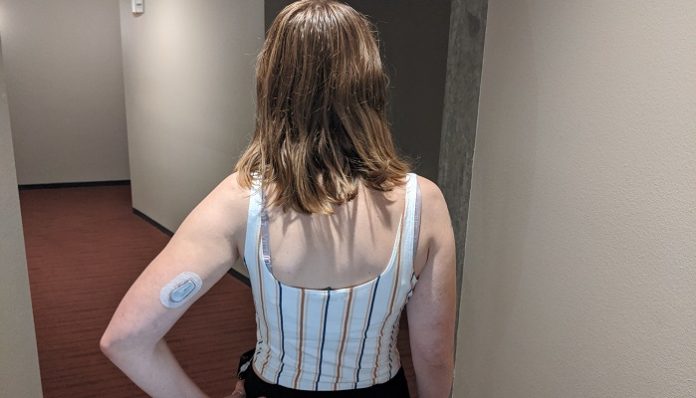
When you spend a huge chunk of your life living as an able-bodied person, it can be hard to adjust to using medical devices. But following a life-changing diagnosis, I’ve learned to love them.
A year and a half ago, at age 22, I was diagnosed with type 1 diabetes.
Suddenly, my body became a math problem with a constantly-changing equation. Type 1 Diabetes is a constant balancing act: Too much insulin can kill you, but not enough insulin can kill you too.
For the first few months as a diabetic, I used insulin pens to inject myself. I also pricked my fingers to check my blood sugar levels.
As someone who had a needle phobia for most of my life, this was insanely hard to deal with. It took a long time to be able to inject myself without my boyfriend’s help and/or without bursting into tears.
Also, testing your blood sugar by pricking your fingers is like driving a car blindfolded, and you only get to take off the blindfold once every few hours. This is because a diabetic’s blood sugar is constantly in flux. One finger prick only gives you a brief glimpse into what’s going on inside your body, and not knowing where your blood sugar is can be dangerous.
Those first months without medical devices were absolute hell.
I was constantly worrying about my numbers. People have died because their blood sugar went too low while they were asleep. Because of that, I didn’t sleep through a single night for almost four months.
My saving grace is called the “continuous glucose monitor.” This device constantly reads your sugar levels, giving you a real-time graph of your readings. You can also set up alarms that will go off if your number is too low or high.
My first night after finally getting a CGM, I slept like a baby.
Shortly after getting the CGM, I also got an insulin pump, which attaches to me, does my insulin calculations, and pumps the required insulin straight into my body. This means that instead of doing at least five injections a day, I only have to do one every three days when I need to change out my pump’s infusion site!
Words cannot express how much my insulin pump and CGM have made my life easier.
In those months before getting the devices, I was an anxiety-ridden mess. After I got them, I started to feel like a person again.
I didn’t have any qualms about the devices until I went to the beach for the first time with them. It made me feel like a robot lady, with a sensor stuck to me and a tube coming out of my infusion site and into my pump. Most of the children stared at me, and even a few adults gave me looks.
I hated that my body could no longer be enough and that I needed these robot parts to live just like everybody else.
After getting back from the beach, I looked in the mirror. That made me realize that I wasn’t “Lora plus robot parts.” These devices are my parts. As much as I wish I didn’t need them, I am so lucky to have them.
I was miserable for months without them. I wasn’t myself anymore. Now, I can live like my normal self with my medical devices without thinking about my diabetes every few minutes.
And while I enjoy the privilege of deciding how visible I want my disability to be, I never bother to hide my medical devices. In fact, I wear them proudly.
When I was working a customer service job last year, I wore my CGM on the back of my arm at work. One day, a woman came up and asked me to tell her about it because she was a diabetic who wanted to get one herself! We compared insulin pumps, and I talked up my CGM to her.
It made me happy to be able to connect with someone about our disability. I was also happy to advertise that I was part of the Type 1 community on my arm, opening me up to interactions like that.
So while I can be resentful of my medical devices sometimes, I also love them as a part of my body.
This National Diabetes Awareness Month, remember that medical devices are beautiful, not shameful. Technology and medicine have come so far to make previously fatal illnesses manageable. And I can’t wait to see what other kinds of medical devices I can proudly wear in the future.
Feature Image courtesy of the author.


















